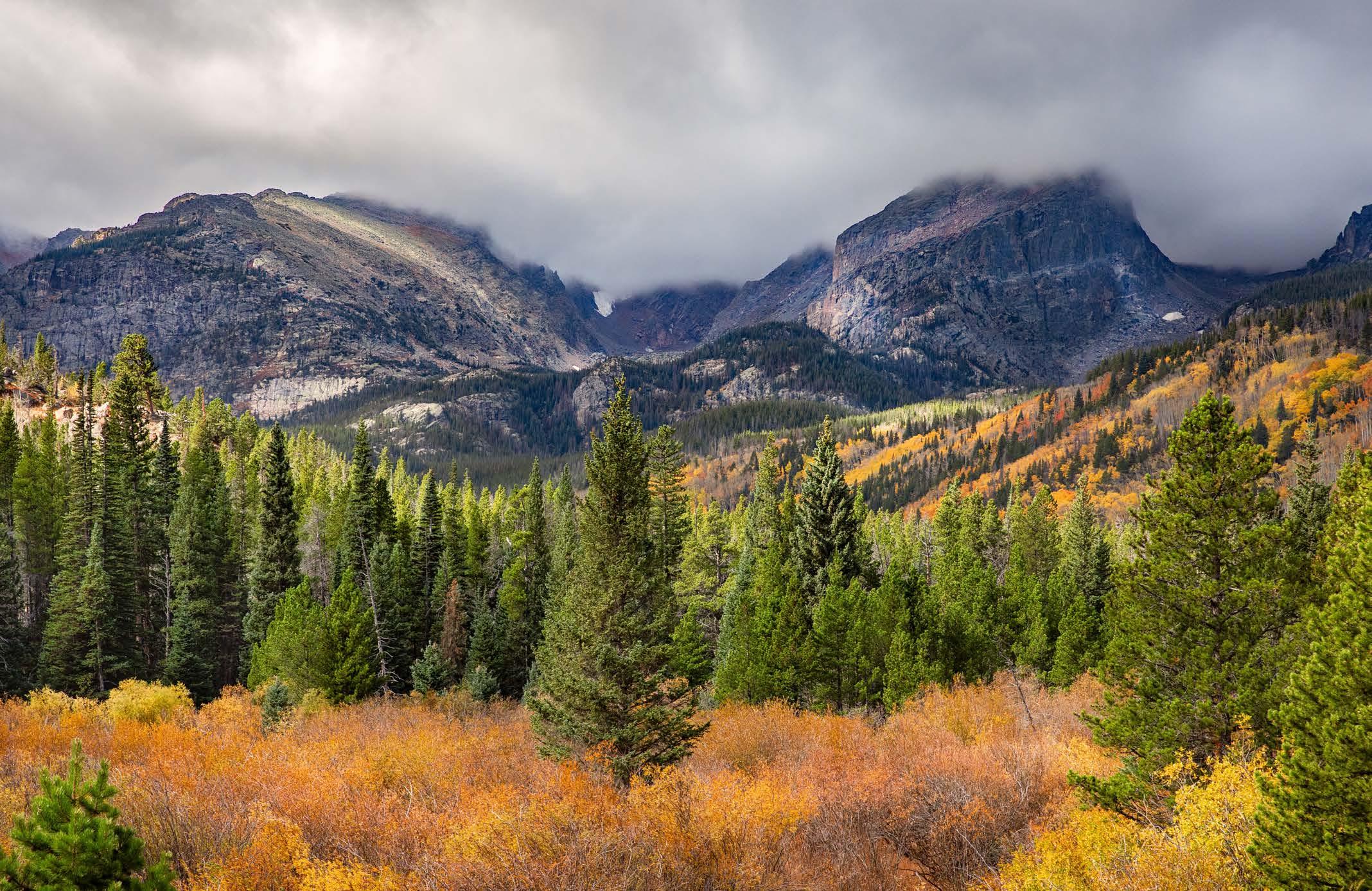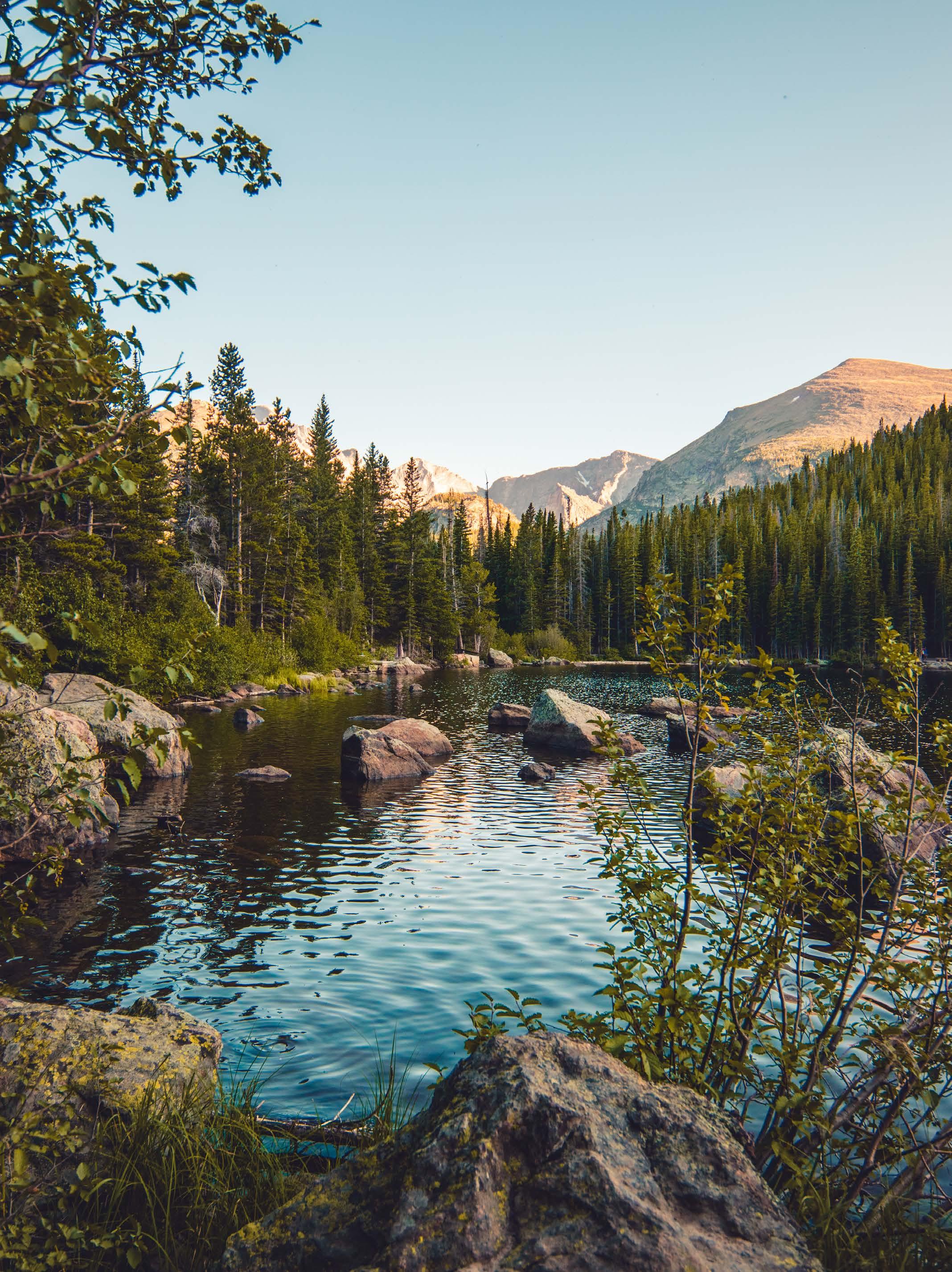
4 minute read
Rocky Mountain National Park
Women played a significant role in shaping Rocky Mountain National Park’s long, fascinating history, among them Margaret Fuller Boos, the park’s first female ranger-naturalist, and Josie Hupp, an Estes Park businesswoman, pioneer and hotel owner.
Stretching 265,807 acres and set in northern Colorado, Rocky Mountain National Park spans the Continental Divide, covering protected forests, white-capped mountains and alpine tundra across a wide range of mountain environments. Whether it’s wildflower-peppered montane meadows, pristine subalpine lakes or the park’s soaring peaks in the alpine zone, an sublime adventure — and sublime wildlife viewing on over 300 miles of trails — awaits.
The Flora and Fauna
Supporting life up to 14,000 feet above sea level, the park’s wet, lush riparian ecosystems in its lower reaches give way to evergreen forests and high mountain lakes and tundra, the latter one of the earth’s harshest environments.
Plant — or ecological — succession leads to changing microorganisms and wildlife in the park. Barren landscapes affixed with mosses, grasses and flowering plants precede the appearance of aspens in sunny, open areas, followed by lodgepole pine trees rising from open, burned areas. Next to replace them are ponderosa pines, Engelmann spruces and — depending on elevation — Douglas firs or subalpine firs. This climax vegetation then stands tall until natural disturbances — be it windstorms, avalanches, floods or climate change — ignite the succession anew.
Animal species to watch for include mule deer, elk, black bears and coyotes, not to mention moose, mountain lions and long-eared, shorttailed snowshoe hares.
The Weather
Rocky Mountain National Park is known for its extreme, rapidly changing weather conditions, particularly in the highest elevations. Elevations before 9,400 feet often experience moderate temperatures, though higher points — like Longs Peak and Trail Ridge Road — can see snow into July. As is the case with mountain weather, day and nighttime temperatures swing significantly.
Watch weather and road conditions closely on the park’s website and follow @rockynps on Twitter for current, rapidly changing conditions. Also, plan your wardrobe (and consider layering) carefully.
The Hikes, Drives and Viewpoints
Trail Ridge Road
Among the park’s most glorious highlights, high-alpine Trail Ridge Road winds across the vast tundra to 12,183 feet in elevation, a thrilling drive that journeys upward for a sweep of the Rockies in all directions, breathtaking wildflower displays and the point where evergreen forests cease and unforgiving tundra begins. Not surprisingly, the route is impassable, and therefore closed, during winter.
Emerald Lake Trail
The super-scenic, 3.2-mile Emerald Lake Trail begins at the Bear Lake Trailhead at the end of Bear Lake Road and brings you to its namesake emerald-green alpine lake, past cascading waterfalls and to jagged Hallet Peak.
Sky Pond Via Glacier Gorge Trail
A demanding, 9.4-mile, out-and-back trek to Sky Pond via the Glacier Gorge Trail offers a bit of everything — rock scrambles, plummeting waterfalls, awesome mountain views, and river and stream crossings. Then there’s the pièce de résistance; Sky Pond’s clear, blue waters at 10,900 feet. For a more moderate alternative, start from the Glacier Gorge Trail, trekking 5.7-mile The Loch for views of plunging Alberta Falls and vistas of the trail’s eponymous subalpine lake. Perched at 10,190 feet, it’s set within one of the world’s most studied watersheds.
Gem Lake Trail
A beautiful 3.1-mile out-and-back hike, Gem Lake Trail begins at the Lumpy Ridge Trailhead, with views of Estes Park, Longs Peak and the Continental Divide.
Dream Lake Trail
Dream Lake Trail is a 2-mile, out-and-back hike that begins at the parking lot at Glacier Gorge, near Estes Park, affording postcard-worthy views of Hallett Peak reflecting on the glassy waters.
About the Park
Location - Northern Colorado, spanning the Continental Divide
Established - January 26, 1915
Area 265,807 acres

Getty










